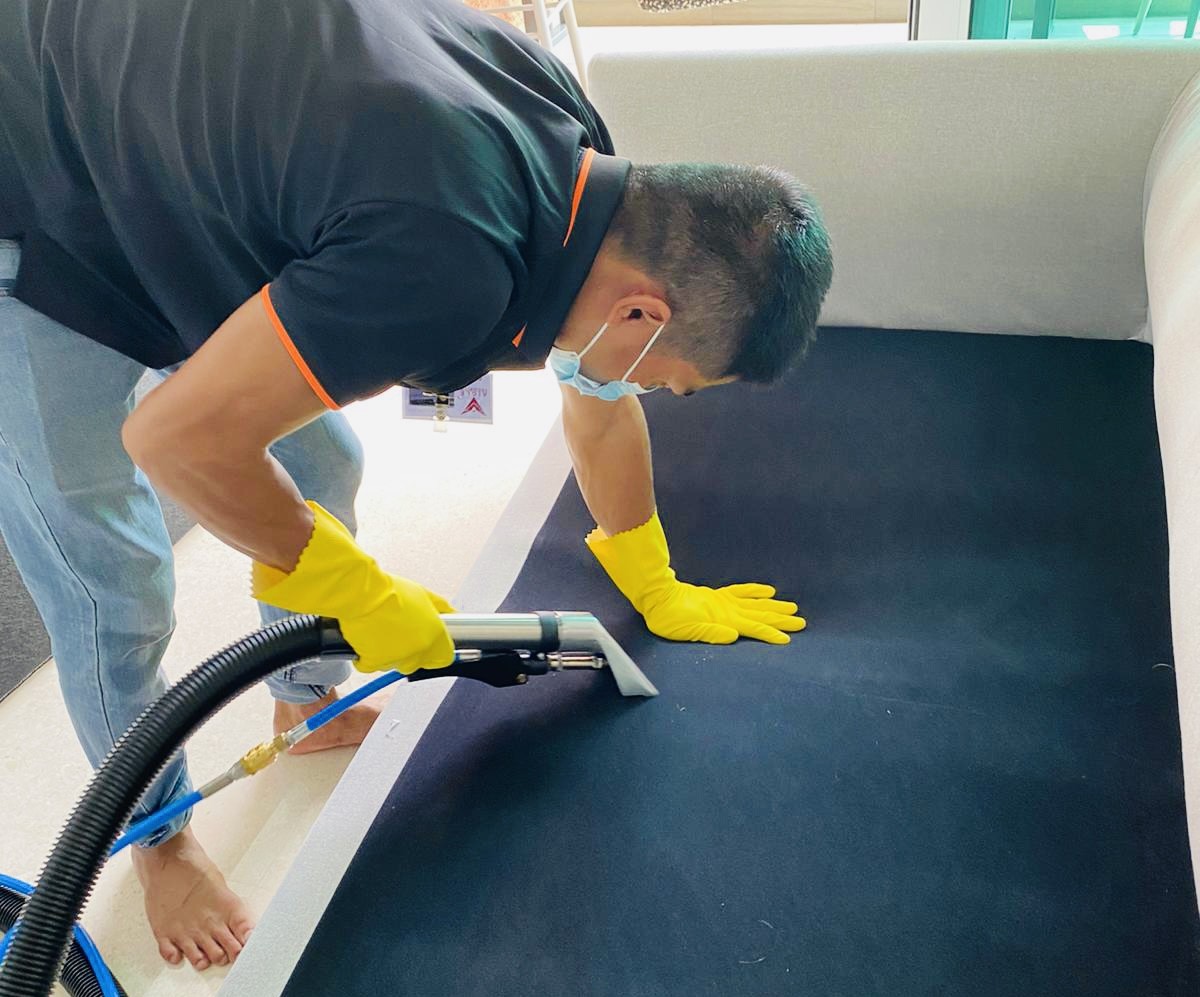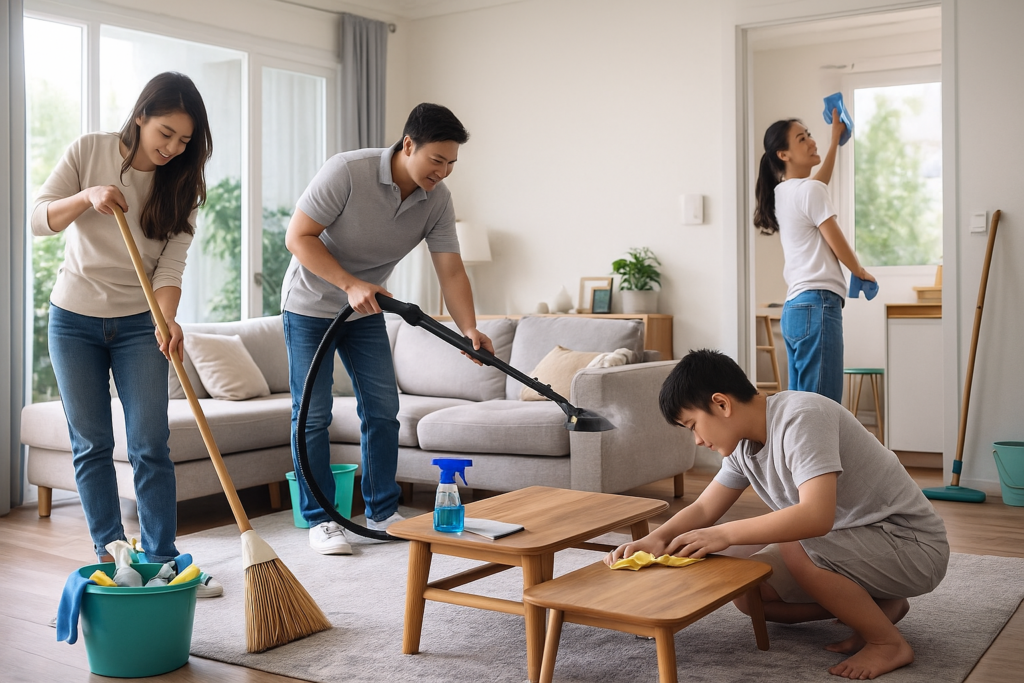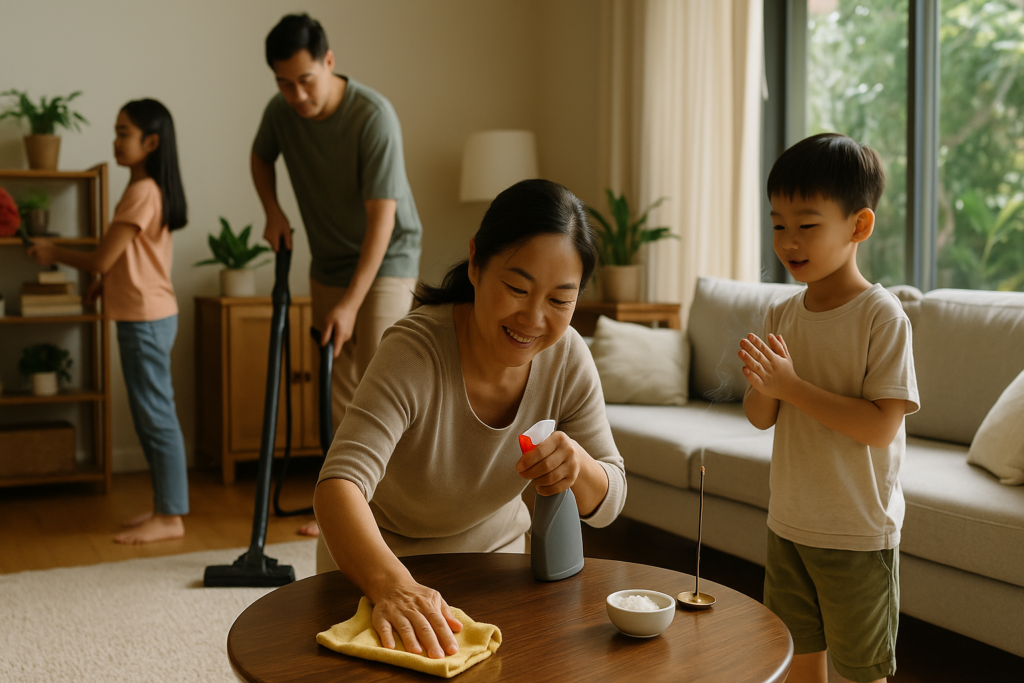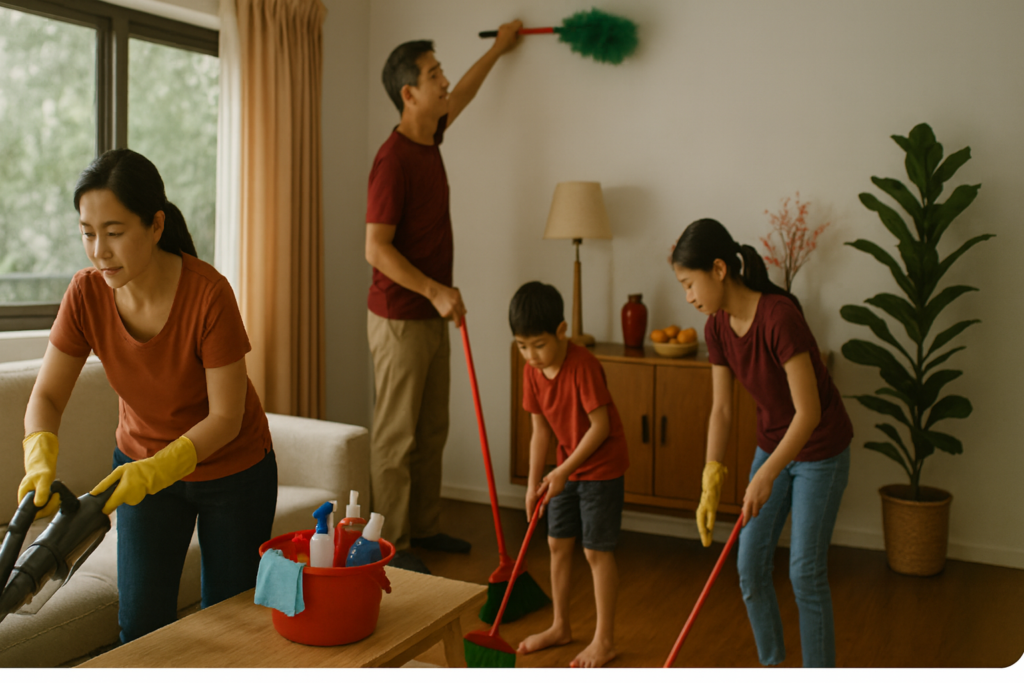
When it comes to maintaining a healthy home, many people focus on floors, kitchens, and bathrooms. But there’s one major allergen hotspot that often goes unnoticed — your sofa. Whether it’s fabric or leather, your sofa is a prime location for collecting dust, pet dander, pollen, mould spores, and other allergens. When allergies are part of daily life, keeping your sofa clean becomes a necessary part of managing symptoms.
Here are 12 health-driven reasons to make sofa cleaning part of your routine:
1. Reduces Dust Mite Exposure
Among indoor allergens, dust mites top the list — and your sofa offers the perfect conditions for them to thrive. These tiny creatures thrive in the warm, fibrous environment of upholstery, where they feed on human skin flakes and debris. Their faeces and body fragments are potent allergens, easily triggering symptoms such as sneezing, a runny nose, and wheezing. Using a HEPA vacuum for weekly cleaning, combined with periodic steam treatment, helps cut down dust mite levels and makes breathing easier.
2. Minimises Pet Dander Accumulation
Even pets that don’t shed visibly still release dander — microscopic flakes of skin — into the air. These particles settle into sofas and linger deep within cushions and fabric. Pet dander is lightweight and sticky, making it difficult to remove with surface-level cleaning. Over time, it builds up and increases exposure for individuals with allergies. Deep cleaning your sofa removes these particles from the upholstery fibres, improving comfort and reducing allergic reactions in your home.
3. Prevents Mould Growth
Whether from a drink spill or sticky weather, moisture can linger in your sofa and quietly fuel mould growth over time. Mould spores multiply quickly in such conditions, releasing airborne particles that are harmful when inhaled. Exposure can cause respiratory infections and sinus congestion, and worsen asthma symptoms. Regular sofa cleaning, particularly using steam or anti-fungal treatments, helps remove spores and reduces the risk of mould growth in hidden crevices.
4. Improves Indoor Air Quality
Sitting down might feel harmless, but it often stirs up settled allergens, sending them back into circulation around the room. Allowing allergens to accumulate in soft furnishings gradually reduces the air quality in your home. A thorough clean removes what’s settled in and helps people breathe easier, especially those prone to respiratory problems.
5. Eases Allergy Symptoms
Frequent sneezing, nasal congestion, coughing, and itchy eyes are just a few symptoms that allergy sufferers experience. These reactions are often exacerbated by hidden allergens embedded in sofas. By thoroughly cleaning your sofa, you reduce the allergen load in your immediate environment. It directly contributes to reduced irritation and more manageable symptoms, especially during high-allergen seasons such as spring and autumn.
6. Removes Pollen That Settles Indoors
Pollen doesn’t stay outside; it’s easily tracked indoors by shoes, clothing, pets, and open windows. Once inside, it settles on soft furnishings like your sofa. Even if you vacuum your floors and wipe down surfaces, pollen trapped in the upholstery can continue to affect allergy sufferers. “A proper sofa clean helps get rid of trapped pollen, making your space easier to live in, especially for those with seasonal allergies.
7. Protects Children and Elderly Residents
Allergens in the sofa can hit children and older adults the hardest. Their bodies either haven’t built up strong defences or have lost some of that resilience with age. Keeping sofas clean is one of the easiest ways to make your home more comfortable and safer for your family.
8. Reduces Risk of Skin Reactions
If your skin flares up easily, allergens hiding in your sofa can exacerbate the condition, especially for conditions like eczema or hives. Sweat, pet residue, cleaning product residue, and mould spores can all cause skin flare-ups. Keeping your sofa clean can prevent irritants from building up and triggering skin issues, especially if someone in the house already suffers from eczema or other conditions.
9. Deters Pests That Carry Allergens
Unclean sofas can attract pests like fleas, mites, and even bed bugs. These pests are not only unpleasant to deal with but also carry allergenic material such as saliva, droppings, and shed skin. Some even act as secondary hosts for mould and bacteria. Routine cleaning makes the environment less hospitable to these intruders, which in turn limits exposure to the allergens they bring along.
10. Limits Bacterial Build-Up
Sofas are high-touch items, often used by multiple people daily, which makes them hotspots for bacteria. From minor spills to daily contact with skin and clothing, bacteria find plenty of opportunities to accumulate. Cleaning with antibacterial solutions or high-temperature steam helps kill harmful microbes, reducing the risk of infections and maintaining hygienic conditions, especially in high-traffic areas like living rooms.
11. Supports a Healthier Home Environment
Clean sofas are part of a larger ecosystem of a healthy living space. When neglected, they undermine other cleaning efforts around the home. Clearing allergens from your sofa helps keep the rest of your home in check, too — it’s part of maintaining a clean, safe, and easier-to-live-in environment every day.
12. Encourages Better Cleaning Habits
Incorporating sofa cleaning into your regular schedule can motivate more consistent and detailed home maintenance. Once you become aware of how much dirt and allergens accumulate in your furniture, you’re more likely to extend that mindfulness to other often-overlooked areas. It leads to a cleaner, more organised living space overall and helps reduce allergen sources throughout your home.
Best Practices for Sofa Cleaning
To get the most benefit, it’s important to clean your sofa the right way. Upholstery requires specific care depending on its material, and misuse of products can damage the fabric. General upkeep includes:
- Vacuuming weekly using a HEPA filter-equipped vacuum cleaner to remove surface-level dust and allergens.
- Spot cleaning any spills immediately to prevent stains and mould growth.
- Applying allergen-specific upholstery sprays that break down proteins in dust mite waste.
- Steam cleaning the entire sofa every 3 to 6 months to sanitise and lift embedded particles.
- Scheduling professional deep cleaning annually or more frequently for homes with pets or allergy sufferers.
Always check the manufacturer’s care instructions and test products in an inconspicuous area first.
Professional Cleaning vs DIY
While vacuuming and spot cleaning are useful for regular maintenance, professional upholstery cleaning offers a more thorough approach. Professionals use industrial-grade steamers and fabric-safe sanitisers that reach deeper into the sofa’s structure than home tools can. They also understand how to handle delicate or specialised fabrics without causing damage.
You can vacuum, wipe it down, and use fabric sprays — and those things help keep the surface clean. But allergens don’t just stay on top. They work their way deep into the cushions, and standard cleaning tools won’t get to them. If someone in your household has moderate to severe allergies, relying only on DIY methods leaves too much to chance. That’s when calling in a professional cleaning service becomes less of a luxury and more of a necessity — they’re equipped to clean deeper and remove what regular tools can’t.
If you’re ready to explore what services suit your furniture and fabric type, you can review our available Sofa Cleaning Services.
Conclusion
Allergy prevention starts with what you can control, and your sofa is well within that control. A regularly cleaned sofa does more than improve aesthetics; it actively reduces allergen exposure and helps keep your indoor environment healthy. At a glance, your sofa may seem clean — no visible stains, no strong odours, nothing alarming. But underneath the surface, it could be quietly building up allergens like dust mites, pollen, pet dander, and mould spores.
These allergens don’t stay locked in; they’re released into the air every time someone sits down. If you or a family member deals with allergies, that exposure can build up fast. Regular sofa cleaning helps remove these irritants, where they tend to accumulate most. Looking clean isn’t enough if the air still feels stuffy or your allergies continue to flare up. It’s easy to focus on how a sofa looks or smells, but the real benefit of cleaning it is how much more comfortable your home becomes—less sneezing, easier breathing — things you’ll notice without even thinking about it.





